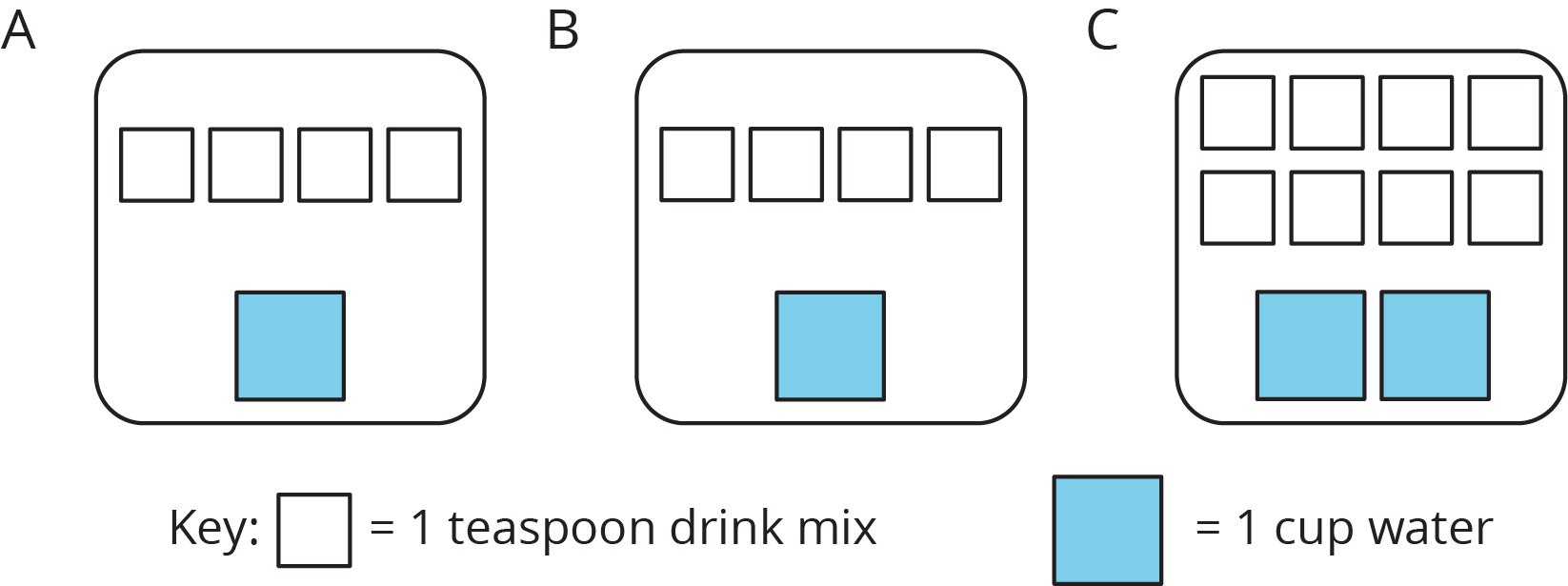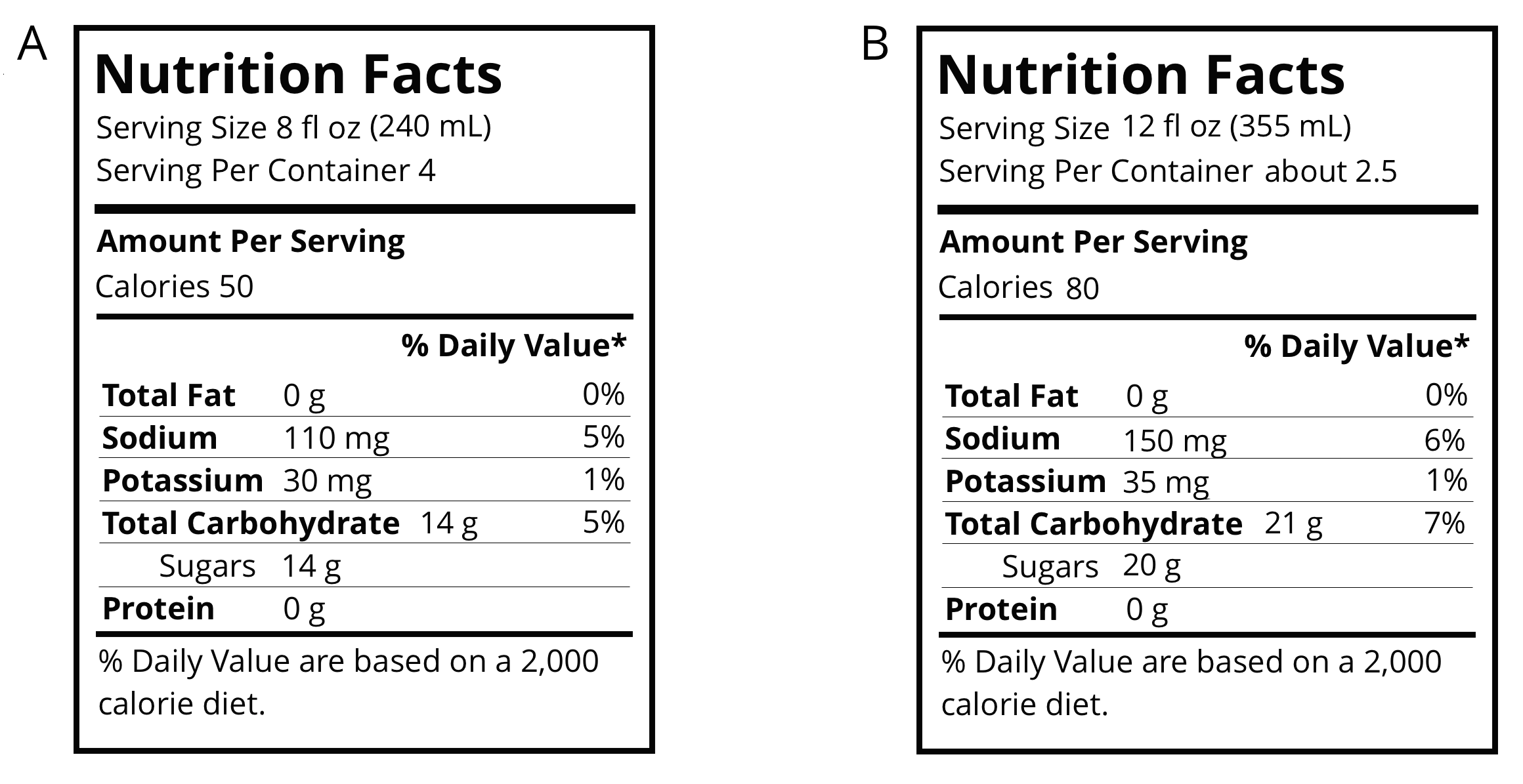Lesson 3
Recipes
Let’s explore how ratios affect the way a recipe tastes.
3.1: Flower Pattern
This flower is made up of yellow hexagons, red trapezoids, and green triangles.

- Write sentences to describe the ratios of the shapes that make up this pattern.
- How many of each shape would be in two copies of this flower pattern?
3.2: Powdered Drink Mix
Here are diagrams representing three mixtures of powdered drink mix and water:

-
How would the taste of Mixture A compare to the taste of Mixture B?
-
Use the diagrams to complete each statement:
-
Mixture B uses ______ cups of water and ______ teaspoons of drink mix. The ratio of cups of water to teaspoons of drink mix in Mixture B is ________.
-
Mixture C uses ______ cups of water and ______ teaspoons of drink mix. The ratio of cups of water to teaspoons of drink mix in Mixture C is ________.
-
- How would the taste of Mixture B compare to the taste of Mixture C?
Sports drinks use sodium (better known as salt) to help people replenish electrolytes. Here are the nutrition labels of two sports drinks.

- Which of these drinks is saltier? Explain how you know.
- If you wanted to make sure a sports drink was less salty than both of the ones given, what ratio of sodium to water would you use?
3.3: Batches of Cookies
A recipe for one batch of cookies calls for 5 cups of flour and 2 teaspoons of vanilla.
-
Draw a diagram that shows the amount of flour and vanilla needed for two batches of cookies.
- How many batches can you make with 15 cups of flour and 6 teaspoons of vanilla? Show the additional batches by adding more ingredients to your diagram.
- How much flour and vanilla would you need for 5 batches of cookies?
-
Whether the ratio of cups of flour to teaspoons of vanilla is \(5:2\), \(10:4\), or \(15:6\), the recipes would make cookies that taste the same. We call these equivalent ratios.
-
Find another ratio of cups of flour to teaspoons of vanilla that is equivalent to these ratios.
-
How many batches can you make using this new ratio of ingredients?
-
Summary
A recipe for fizzy juice says, “Mix 5 cups of cranberry juice with 2 cups of soda water.”
To double this recipe, we would use 10 cups of cranberry juice with 4 cups of soda water. To triple this recipe, we would use 15 cups of cranberry juice with 6 cups of soda water.
This diagram shows a single batch of the recipe, a double batch, and a triple batch:

We say that the ratios \(5 : 2\), \(10 : 4\), and \(15 : 6\) are equivalent. Even though the amounts of each ingredient within a single, double, or triple batch are not the same, they would make fizzy juice that tastes the same.